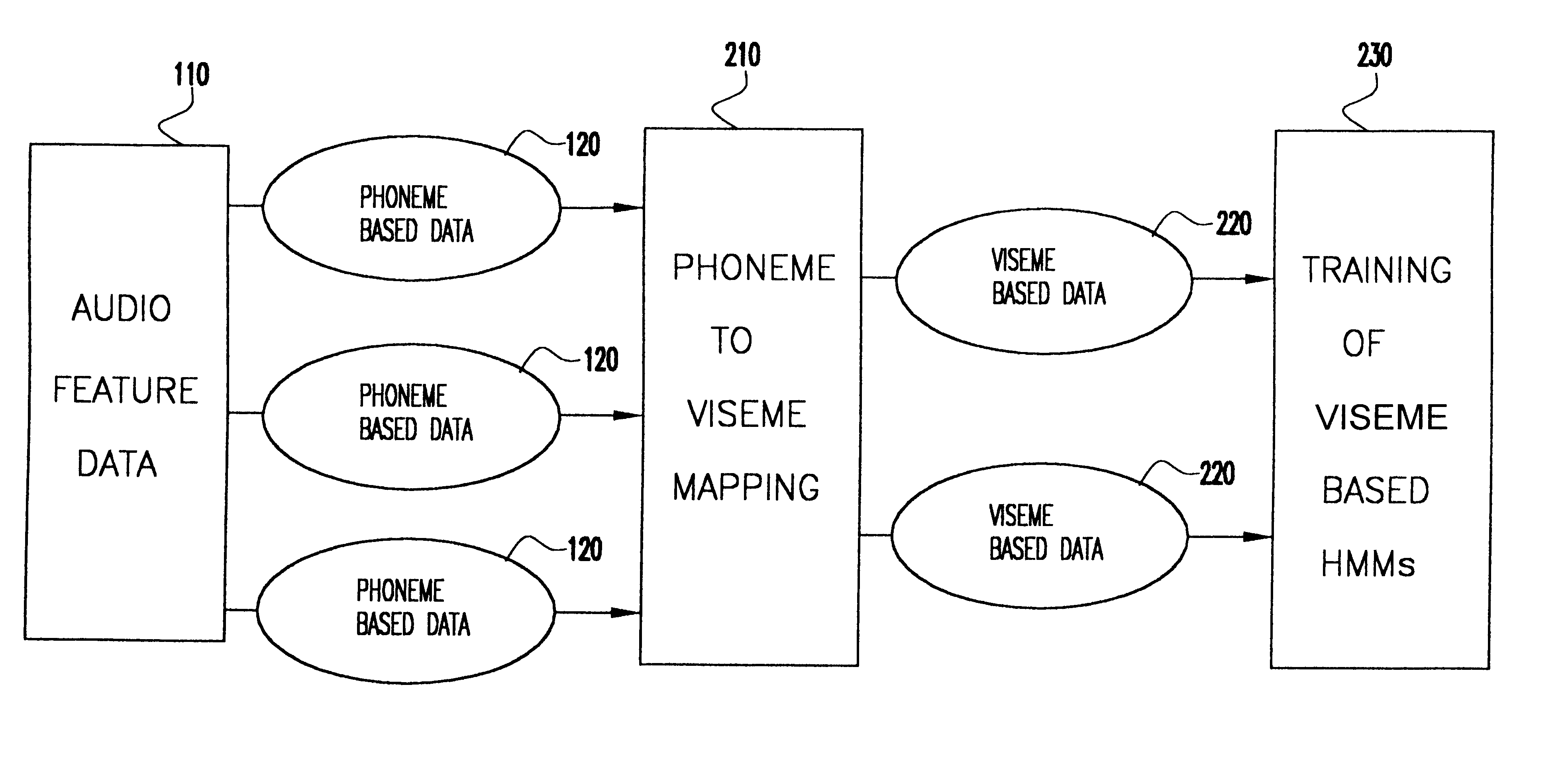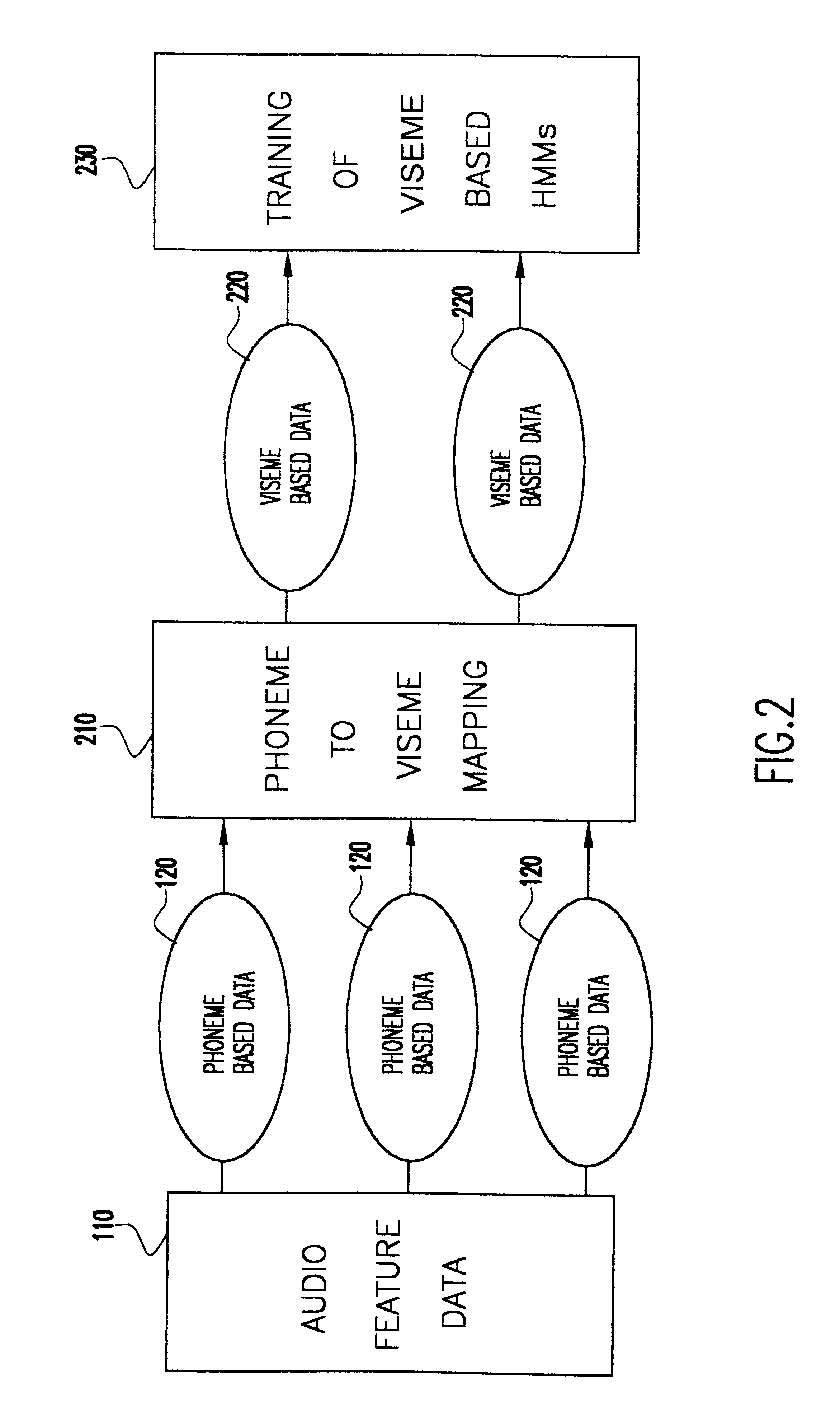Speech driven lip synthesis using viseme based hidden markov models
a hidden markov model and speech-driven technology, applied in speech analysis, data recording, speech recognition, etc., can solve the problems of discontinuity in the output is not smooth, and the context-dependent effect of the visual domain cannot be used during the synthesized visual sequen
- Summary
- Abstract
- Description
- Claims
- Application Information
AI Technical Summary
Benefits of technology
Problems solved by technology
Method used
Image
Examples
Embodiment Construction
Referring now to the drawings, and more particularly to FIG. 1, there is shown the prior art scheme used to construct phoneme based data 120 from audio feature data 110, and then use the phoneme based data to train phoneme based HMMs 130. Audio feature data 110 is classified based on the phonemes, and then individual phoneme HMMs are trained with the data corresponding to that phone.
The approach taken by the present invention is to synthesize the lip movement from the acoustic speech, as shown in FIG. 2. This approach assumes that there is a physical relationship between the audio signal and the corresponding lip shapes, which enables phoneme to viseme mapping 210. So we do not need to recognize what the speaker is actually saying; we just need to know how the lips move with the variation in the audio features. We use this relationship between the audio features and the visual features to generate audio visual mapping 220 and viseme based HMMs 230 instead of phoneme based HMMs for v...
PUM
| Property | Measurement | Unit |
|---|---|---|
| α | aaaaa | aaaaa |
| time | aaaaa | aaaaa |
| size | aaaaa | aaaaa |
Abstract
Description
Claims
Application Information
 Login to View More
Login to View More - R&D
- Intellectual Property
- Life Sciences
- Materials
- Tech Scout
- Unparalleled Data Quality
- Higher Quality Content
- 60% Fewer Hallucinations
Browse by: Latest US Patents, China's latest patents, Technical Efficacy Thesaurus, Application Domain, Technology Topic, Popular Technical Reports.
© 2025 PatSnap. All rights reserved.Legal|Privacy policy|Modern Slavery Act Transparency Statement|Sitemap|About US| Contact US: help@patsnap.com



